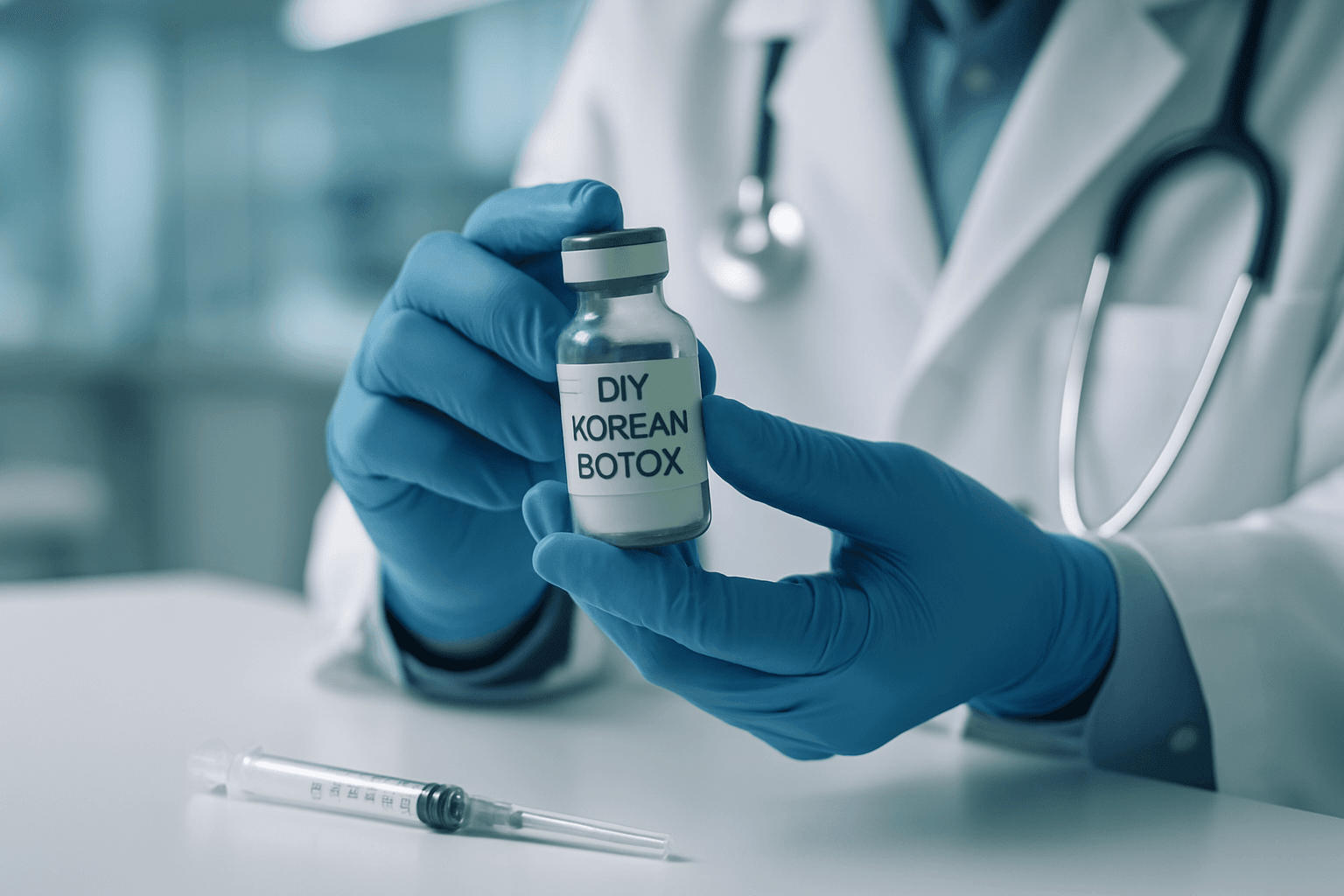The surging popularity of “DIY Korean Botox,” particularly through products like Innotox, has ignited significant alarm among medical professionals. While the allure of cost savings and convenience drives this trend, experts are issuing urgent warnings about the profound risks associated with self-administering these powerful neurotoxins.
Understanding Innotox and its Appeal
Innotox is a botulinum toxin type A product, originating from South Korea, that functions similarly to well-known injectables like Botox Cosmetic. It works by temporarily relaxing facial muscles, which reduces the appearance of fine lines and wrinkles caused by repetitive facial expressions. One key difference that contributes to its DIY appeal is its pre-mixed, liquid formulation, unlike traditional Botox which comes as a freeze-dried powder requiring reconstitution with sterile saline. This ready-to-use format seemingly simplifies the process, making it more attractive to individuals without medical training who seek to perform injections at home. Innotox also boasts stability at room temperature, making storage and transport easier than products requiring refrigeration. Furthermore, some users report a faster onset of effects (2-3 days) compared to Botox (5-7 days) and potentially longer-lasting results (3-6 months, with some claiming up to 10 months).
However, despite these perceived advantages, a critical point of concern for experts is that Innotox is not approved for use by the U.S. Food and Drug Administration (FDA) and other health authorities in many countries. While it holds approval from the Korean Ministry of Food and Drug Safety (MFDS), this does not extend its regulated use to other markets without specific approvals.
The Grave Dangers of Self-Injection
The primary reason experts are sounding alarms is the immense danger of self-injecting neurotoxins without professional medical training and oversight. Medical organizations and experts unequivocally advise against self-injection of botulinum toxin.
Lack of Medical Expertise and Anatomical Knowledge
Administering botulinum toxin injections requires extensive knowledge of facial anatomy, muscle structures, and precise injection techniques. Licensed professionals undergo years of medical training to understand where and how to inject safely and effectively. Without this expertise, individuals risk injecting into the wrong muscle or at an incorrect depth, leading to severe and potentially long-lasting complications.
Risks of Improper Dosage and Product Quality
While Innotox’s pre-diluted form reduces the risk of errors in mixing, the danger of incorrect dosage still remains for untrained users. Too little product may yield no desired effect, while too much can result in an unnatural, “frozen” appearance. More critically, purchasing Innotox through unregulated online sources or third-party sellers means there is no guarantee of authenticity, sterility, or proper storage conditions. Counterfeit or contaminated products pose a direct threat to health, with the potential for serious infections, allergic reactions, and even life-threatening botulism-like illnesses. The Centers for Disease Control and Prevention (CDC) has previously warned about outbreaks linked to unsafe counterfeit botulinum toxin administered by untrained individuals in non-healthcare settings.
Severe and Potentially Irreversible Side Effects
The consequences of improper self-injection can range from undesirable aesthetic outcomes to severe medical emergencies:
- Facial Asymmetry and Drooping: Incorrect placement can lead to uneven facial expressions, drooping eyelids (ptosis), or a lopsided smile. These effects can last for months or, in some reported cases, up to a year.
- Muscle Weakness and Paralysis: Beyond the intended muscle, the neurotoxin can spread to nearby muscles, causing unintended weakness or temporary paralysis.
- Vascular Injury and Blindness: Injecting into a blood vessel can cause severe complications, including vascular occlusion (blockage of blood flow) and, in rare but extreme cases, blindness.
- Infections and Scarring: Non-sterile techniques and contaminated products drastically increase the risk of infections, abscesses, cellulitis, and permanent scarring.
- Systemic Complications: If the toxin spreads beyond the localized injection site, it can lead to systemic symptoms such as difficulty breathing or swallowing, slurred speech, dry mouth, blurred or double vision, and flu-like symptoms, requiring immediate emergency medical attention.
Expert Consensus: A Resounding “No” to DIY Injections
Dermatologists and medical professionals uniformly condemn the DIY trend. Dr. Jeanine Downie, a board-certified dermatologist, firmly states that Innotox “is not FDA approved for usage in this country, and is not recommended under any circumstances.” Dr. Tina Alster, another board-certified dermatologist, emphasizes that while cosmetic use of botulinum toxin rarely causes severe side effects “in experienced hands,” the frequency of serious complications “is increased exponentially when untrained injectors are performing the treatment.” Dr. Anna Chacon, a board-certified dermatologist, warns that products bought from third-party sellers are “often not FDA-approved and may be counterfeit, contaminated or improperly dosed,” and administering them without medical training can lead to “life-threatening reactions.”
Medytox, the manufacturer of Innotox, explicitly states that it sells its product only to licensed medical professionals and authorized distributors and “certainly does not endorse the self-injection of botulinum toxins by consumers.”
Safer Alternatives and Professional Guidance
Rather than risking health and appearance with unregulated DIY injectables, experts strongly recommend pursuing safer alternatives. These include professional cosmetic treatments administered by board-certified dermatologists or plastic surgeons, medical-grade topical skincare, and non-invasive technologies like lasers and radio-frequency skin tightening. For any cosmetic injectable, consulting a licensed and trained professional is paramount to ensure safe application, optimal results, and peace of mind.

